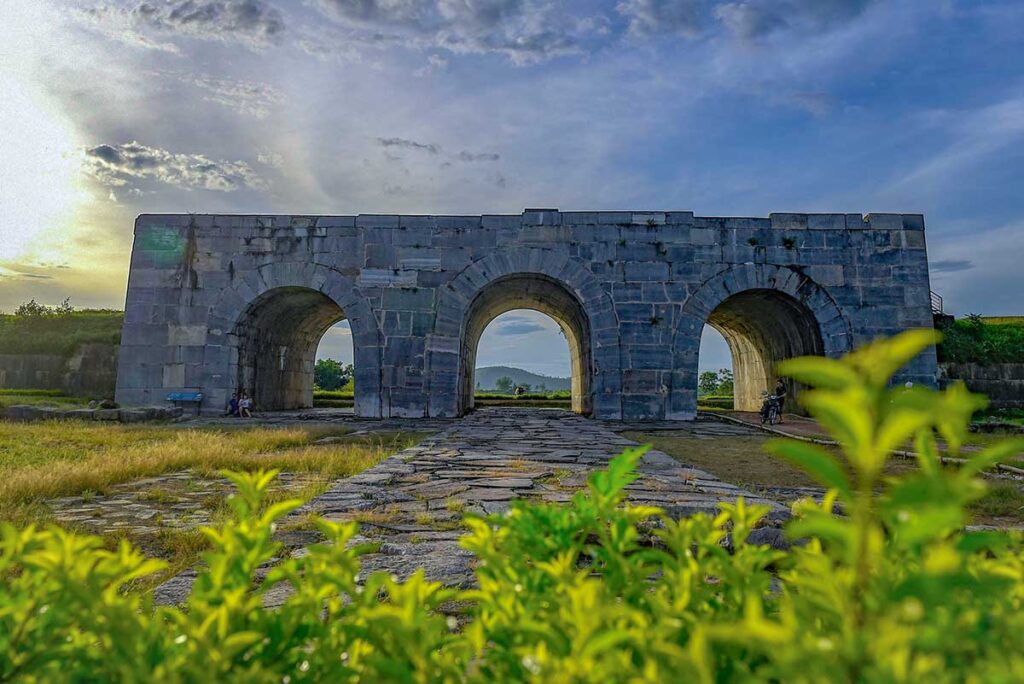History of the Citadel of the Ho Dynasty
Origins and Purpose
The Citadel of the Ho Dynasty was constructed in 1397 by Ho Quy Ly, who shifted the capital of Vietnam from Thang Long (modern-day Hanoi) to Thanh Hoa. The new capital was named Đại Ngu and served as the political and cultural center of the country from 1398 to 1407. The location was chosen according to feng shui principles, strategically positioned between rivers and mountains to symbolize balance and centralized power.
Short-Lived Dynasty and Aftermath
The Ho Dynasty was short-lived. In 1407, it fell to an invasion by the Chinese Ming Dynasty, ending its brief reign. Despite this, the citadel continued to serve various roles under later dynasties until it gradually faded into obscurity by the 18th century. Rediscovered and restored in more recent times, it was officially recognized as a UNESCO World Heritage Site in 2011 for its historical, architectural, and cultural value.
Highlights and Things to see today
While much of the original imperial city has disappeared over time, a few key structures remain standing—mainly the massive stone gates, outer walls, and scattered ceremonial sites. The citadel grounds now blend into rural farmland, giving visitors a unique mix of ancient ruins and daily countryside life.
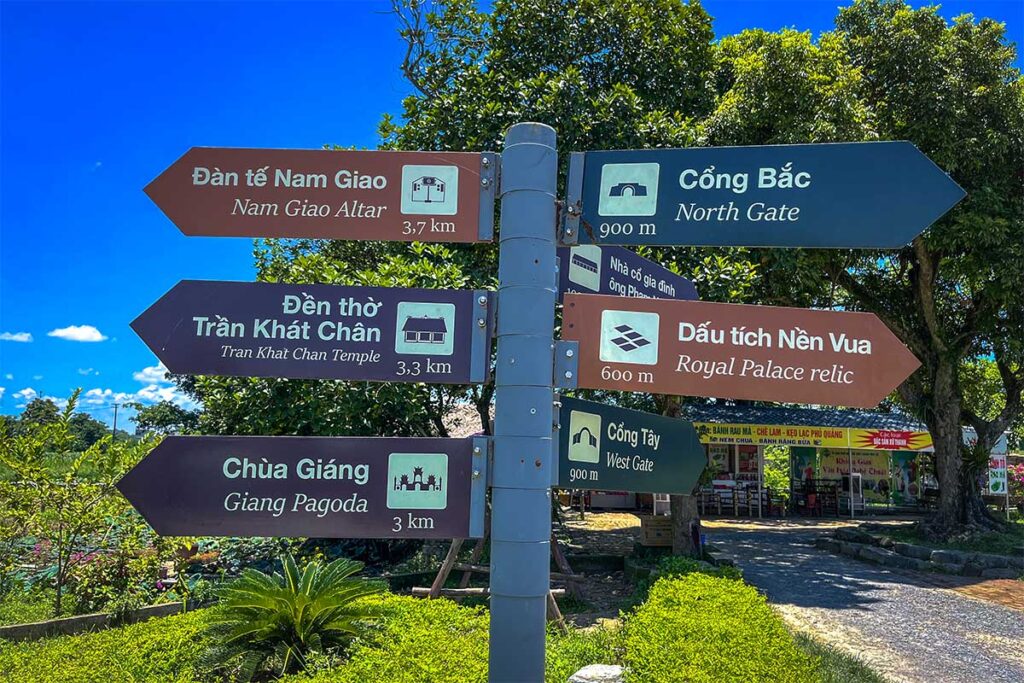
Here’s what you can still explore when visiting the Citadel of the Ho Dynasty today:
1. South Gate (Main Entrance)
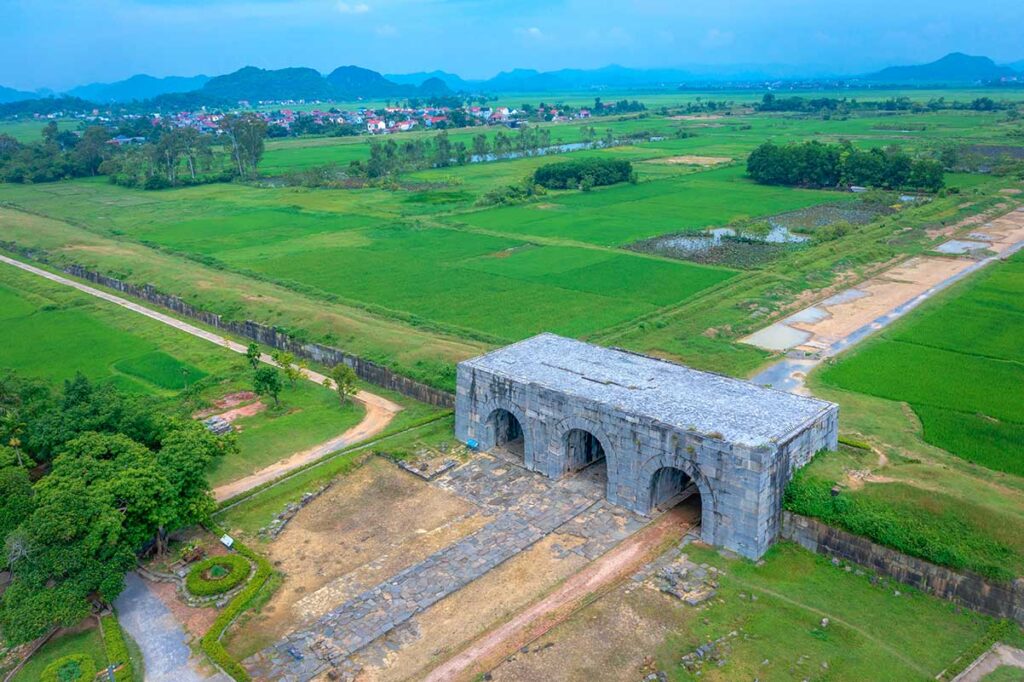
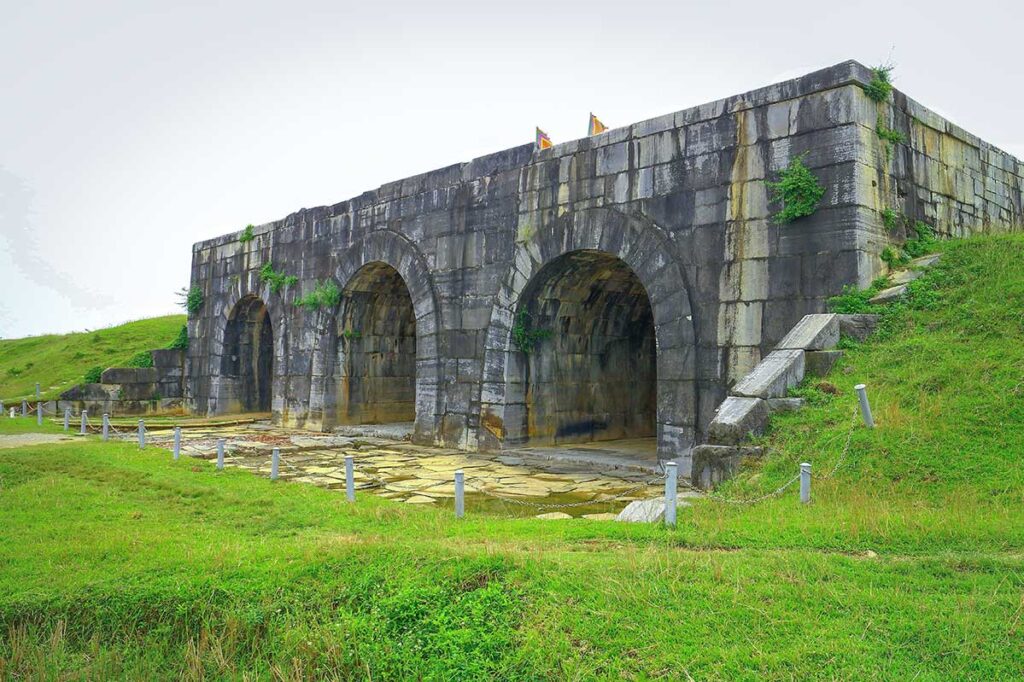
This is the most impressive and best-preserved part of the citadel, featuring three massive stone arches standing 9.5 meters tall. It’s usually the main entrance point for visitors and offers the clearest visual sense of the site’s former grandeur. Good for photos and orientation.
2. East, West & North Gates
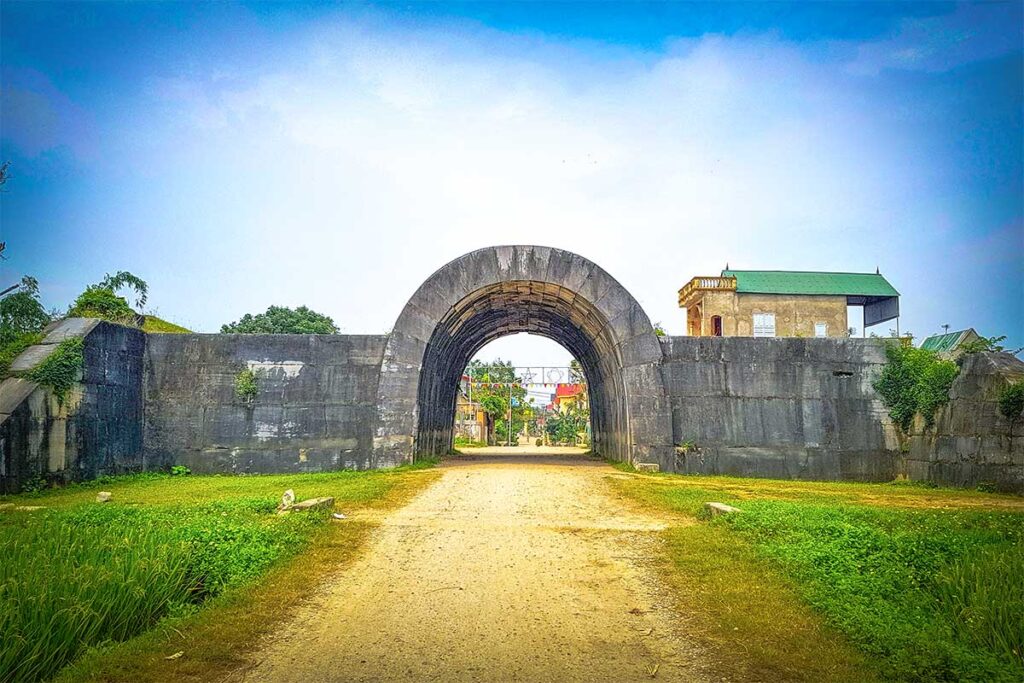
These gates are less well-preserved than the South Gate but can still be accessed by foot, bicycle, or motorbike. In most cases, they are unmanned and open, allowing for a relaxed exploration. Some gates feel more like part of the countryside than historical ruins.
3. Inner Citadel (Hoàng Thành)
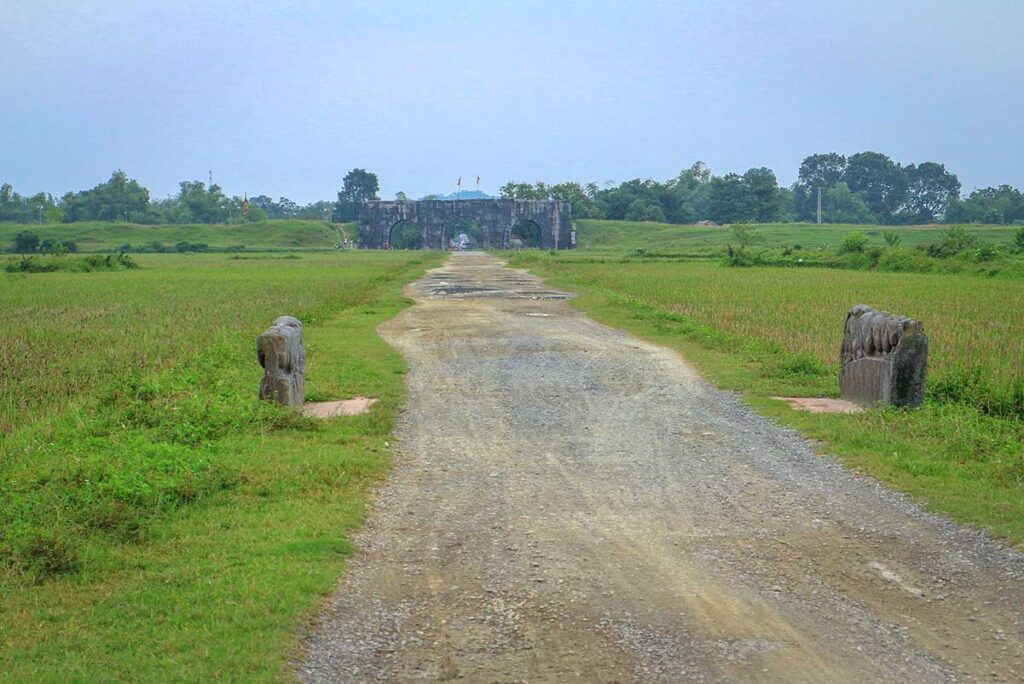
Inside the citadel walls lies a wide, open area filled with rice fields, lotus ponds, and a peaceful rural landscape. You can follow footpaths and dirt roads that align with the original royal city’s layout. Expect local farmers working in the fields—this is still very much living farmland.
4. La Thanh Outer Wall
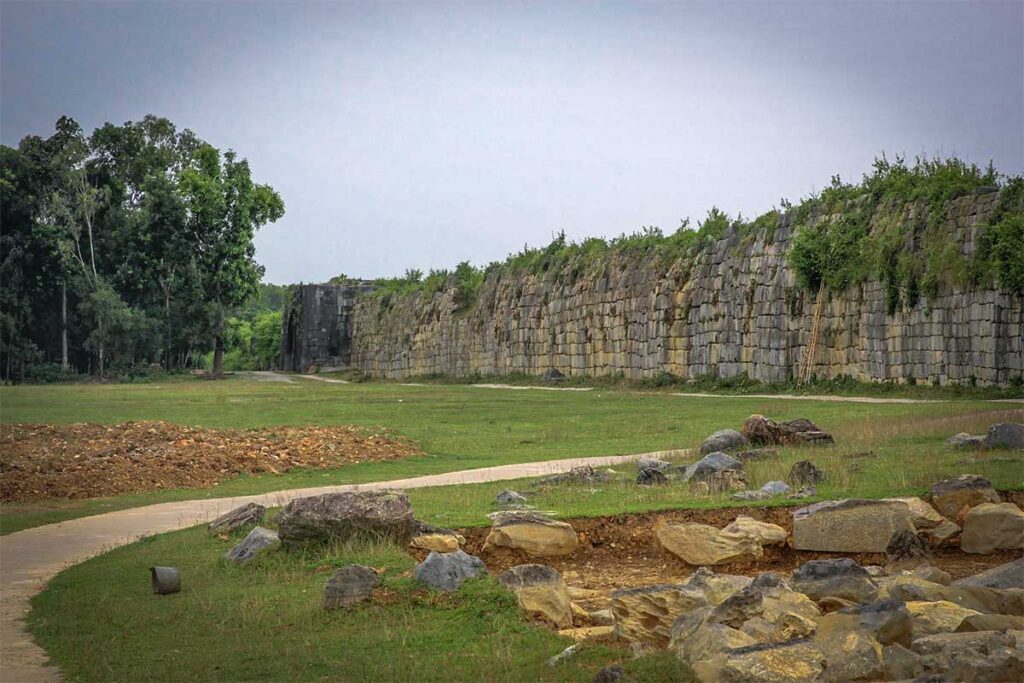
Stretching about 4 kilometers, this defensive wall once surrounded the entire citadel complex. Today, much of it is overgrown or partially collapsed, blending into the surrounding fields. Still, you can spot remnants and imagine the original scale.
5. Nam Giao Altar
Located south of the Inner Citadel, this site was used for imperial rituals and offerings to heaven. Only partially excavated, it’s more symbolic than visually striking, but still worth a look for those interested in Vietnam’s spiritual history.
6. Small Museum and Exhibits
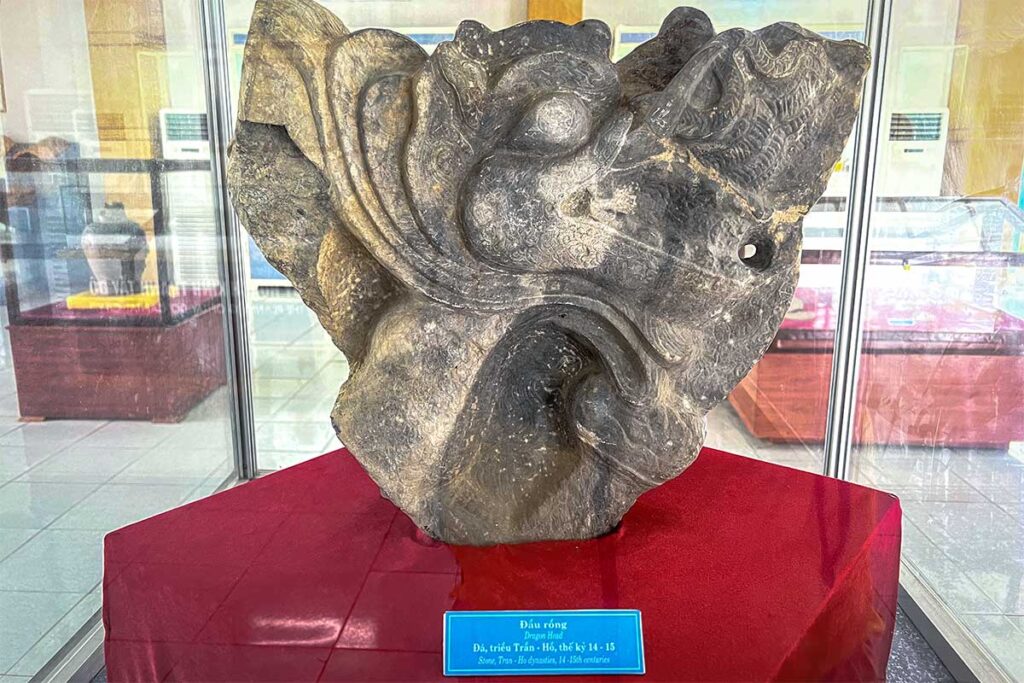
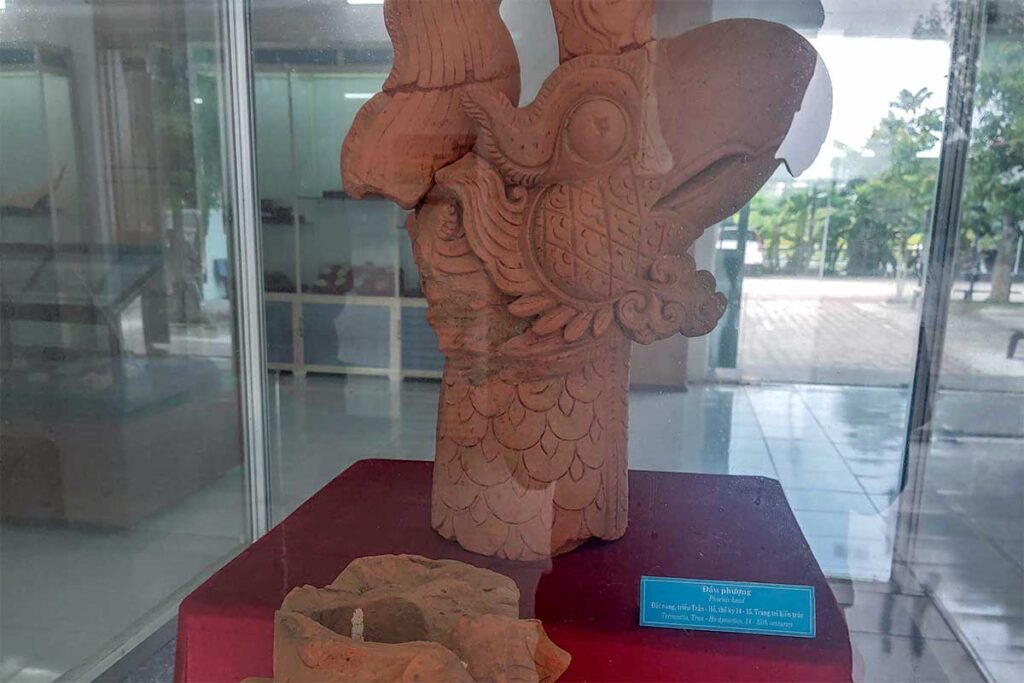
Near the South Gate is a modest museum with a small collection of excavated items: carved dragon heads, clay roof tiles, old coins, and everyday tools. English explanations are limited but present. It adds context, but don’t expect an extensive or high-tech display.
Visiting information: Location and Getting there
Despite being a UNESCO site, Ho Citadel remains off the typical tourist trail, and getting there requires a bit of planning. The remoteness is part of its charm—but also why it sees so few visitors. Here’s what you need to know before you go.
Where is Ho Citadel?
Ho Citadel is located in Vinh Loc District, in Thanh Hoa Province. It lies in a quiet agricultural area about 50–60 km northwest of Thanh Hoa City, surrounded by rice paddies and small hills.
How to get there
The site is best reached by private car or motorbike. The surrounding countryside roads make for a scenic ride, especially for those who enjoy off-the-beaten-path travel.
You can visit as a day trip from Thanh Hoa City, or combine it with a journey to nearby destinations like Pu Luong.
There’s no direct public transport to the site. While some local buses might get you close, the lack of signage and onward connections makes this impractical without local help.
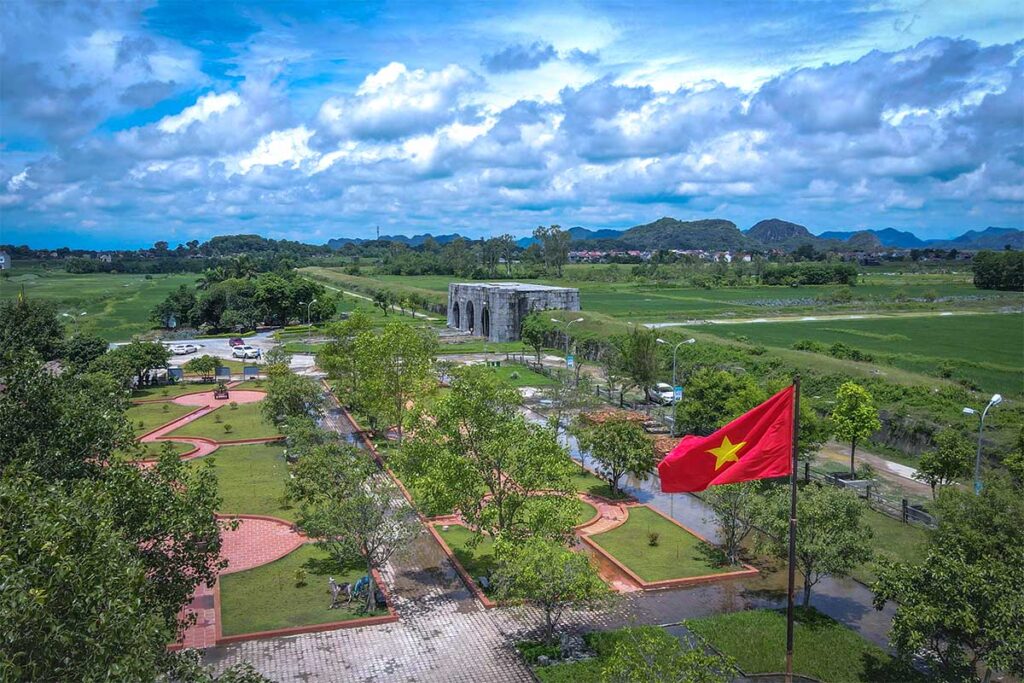
Tickets and Entrance Fees
- Entry: 40,000 VND for adults
- Children under 8: free
- Occasionally, ticket booths (especially at smaller gates) are unmanned, so you might enter without being asked to pay. The south gate is most likely to have staff.
Best time to visit
- Likely you have the whole place to yourself on most days, only weekends and holidays (and even then only late afternoon) sees some more tourists.
- Visit in the morning or late afternoon for cooler temperatures and better light for photos.
- Be aware that the citadel is very exposed, especially during summer. There is little natural shade, and it can get extremely hot by midday.
Tips for Visiting Ho Citadel
What to Bring
- Sun protection – Hat, water, and sunscreen are essential. There’s little shade.
- Comfortable shoes – For walking or cycling through the site.
- Snacks or drinks – Shops are sparse, and there’s no café on-site.
How long do you need?
Most visitors will need 1–2 hours to see the main gates, walk the inner area, and visit the museum.
If you’re exploring slowly or cycling between gates, you might want up to 3 hours.
Restaurants and shops in the area
The area around the citadel is rural and very quiet. You might find a basic café or small drink stall, but don’t count on a proper meal. It’s best to eat before you go or bring your own food, especially if you’re on a longer road trip.
What sights are nearby?
While nothing is directly next to Ho Citadel, it can be part of a larger itinerary through Thanh Hoa Province if you have your own transport.
Possible stops to combine include:
- Pu Luong Nature Reserve – For trekking, homestays, and rice terraces.
- Ben En National Park – Boat rides and forest scenery.
- Sam Son Beach – A local beach destination with seafood and family-friendly activities.
All of these require at least 1–2 hours of driving from the citadel. There’s no cluster of attractions nearby, so plan accordingly.
